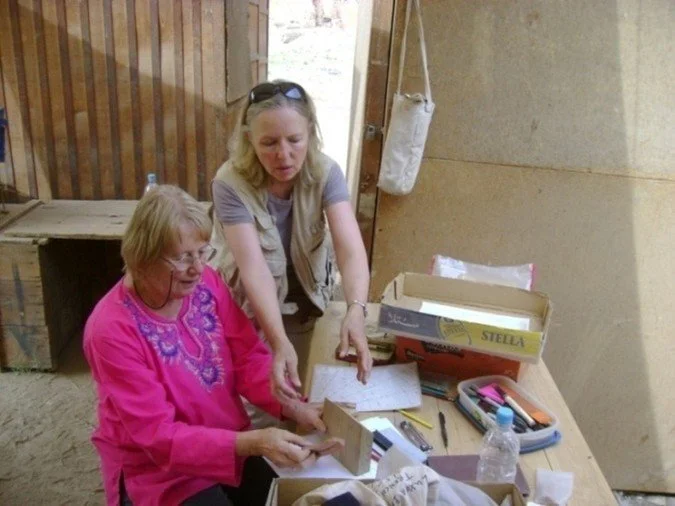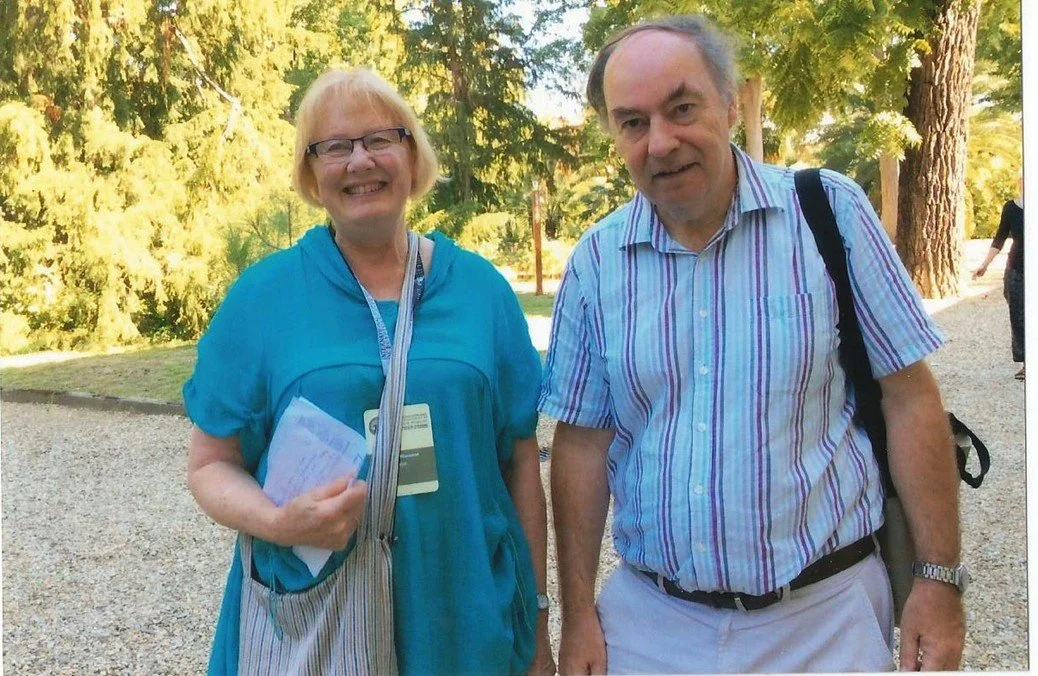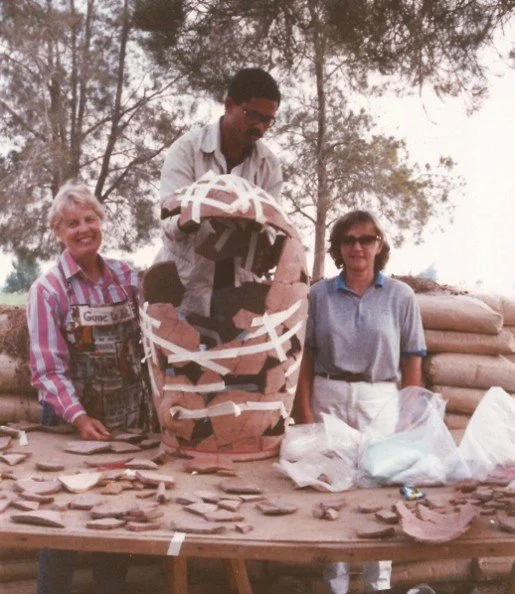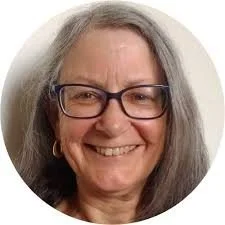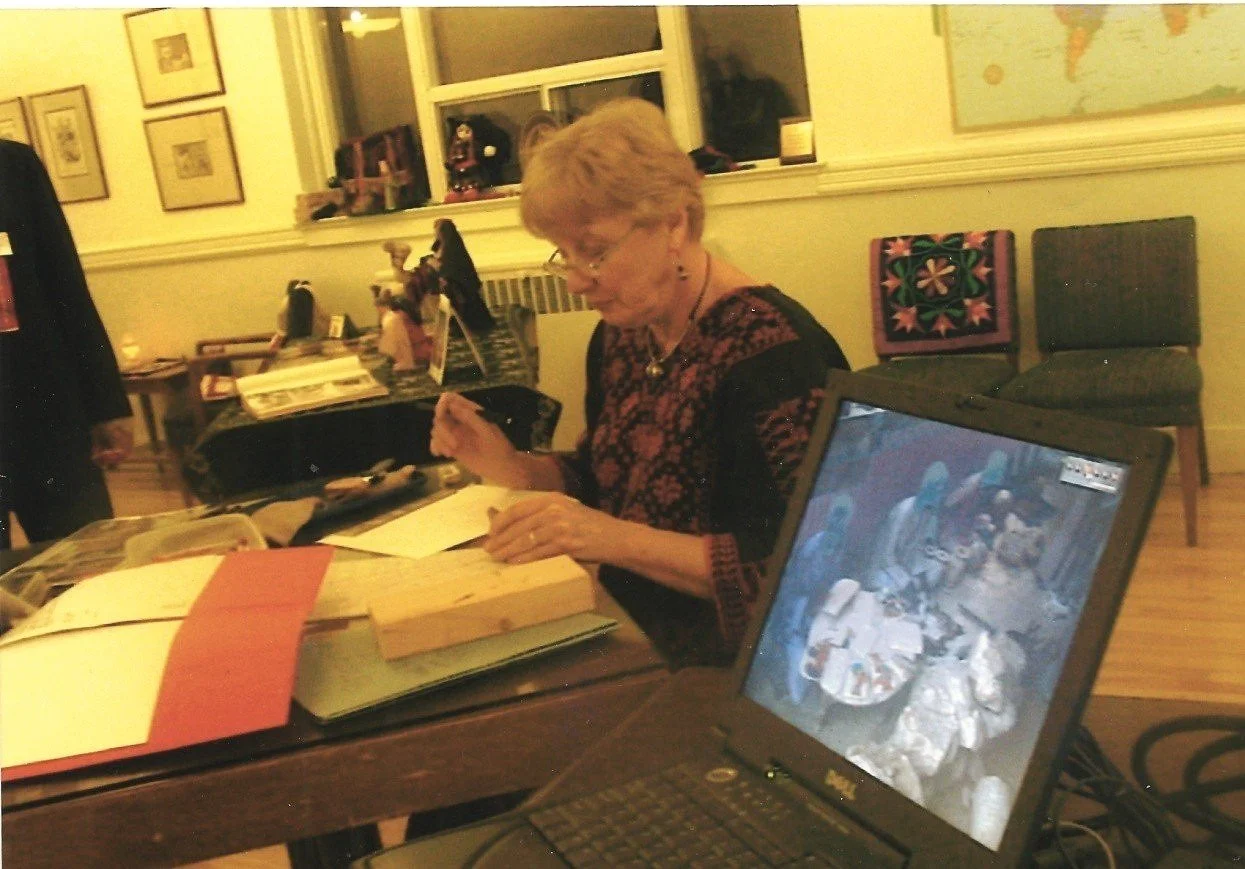Canadian Egyptologist - Rexine Hummel
Part V - People Who Helped Rexine as a Ceramicist
I had asked Rexine to provide me with some details of people who had helped her with her career. The following excerpt is written by Rexine (footnotes for context are added by me). I’d like to note that it doesn’t surprise me that Rexine wished to acknowledge all these people, but I, and I’m sure many others, are also grateful to Rexine for sharing her ceramic knowledge with us.
These helpers have not been presented in order of importance, but rather in a chronological order.
Larry Pavlish
Larry was a huge help to me in my early days as a ceramicist.
He was a popular professor of Physics and Archaeology at the University of Toronto. He was also a geologist and never tired of answering my frequent and probably annoying questions. He was always available to identify the rock inclusions in the sherds that I handed him.
He also knew how afraid I was of snakes. Since a viper was found one day in the courtyard my fears were justified. He advised me and my roommate Alicia de Rodrigo to put egg shells or hardened orange and lemon peelings in the open space under our bedroom door which was open to the courtyard. He told us that snakes don’t like a rough or sharp surface.
Lyla Brock
It was Lyla Brock [2] who invited me to be the ceramicist on the Tell el-Borg dig in the North Sinai at a crucial time in my life. My husband had just passed away and I was at a very low point. The Borg dig invitation changed my life going forward.
Rexine and Lyla
Lyla who was the artist on the dig also helped me to improve my pot drawings. Here she is showing me how to get the stance of a body sherd.
David Aston
The preeminent British ceramicist, David Aston, was a huge help to me when I was a novice at Tell el Borg. When his team from Tell Daba’a came to have lunch with us at Tell el Borg he graciously agreed to come and look at the pottery. I followed him from table to table with a notebook and wrote down every word he said about the sherds. I could hardly keep up with him. In later years he even gave me some of the books that he had written. I have treasured them.
Rexine and David Aston
Rosemary Aicher and Adel Farouk
Both Rosemary [4] and Adel taught me how to glue pots together properly. It is an exact science: i.e., if you are just 1 mm out somewhere on the pot you can’t fit in the last sherd. It requires great patience to be successful.
Pat Paice
Pat Paice [5] was the ceramicist for the Wady Tumilat Project. Their office was conveniently located next door to the Mendes project where I worked at the University of Toronto. I must mention that the Wady Tumilat Project began the idea of using table tops resting on (saw)horses so that you could stand up to sort the pottery instead of crawling around on reed mats. It makes a huge difference.
Pat was an expert on identifying East Greek and Persian amphorae. When the archaeologists at Mendes encountered huge deposits of Late Period amphorae, Pat Paice was very kind in helping me identify them.
LUXOR TOWN MOUND PROJECT
In 2010 the Ancient Egypt Research Associates (AERA) carried out a large salvage excavation on the remains of the Luxor Town Mound. The city authorities demolished the early 20th century palace of Yassa Andreus Pasha on the Luxor Corniche. The foundations of the palace were cut deeply into the ancient layers of the old Luxor town mound. The Luxor settlement has been systematically removed (but scantily recorded) from inside, and in front of, Luxor temple since the 19th century.
Aurelia Masson
Aurelia Masson [6] was the French ceramicist at Karnak Temple in Luxor. We became friends when we worked together on the Luxor Mound. Aurelia, who was studying the sherds from the Priest’s Quarters at Karnak Temple was an expert on late Period pottery and she generously shared her drawings with me.
While I was volunteering on the Luxor town Mound excavation I met Pamela Rose and Bettina Bader, both of whom I admire and will mention later in connection with different projects.
THE DEWATERING PROJECT AROUND LUXOR TEMPLE
I met Pam (Rose) while I was working for Ted Brock on the pottery that came from a narrow ditch dug around the entire Luxor Temple in order to lower the ground water level which was destroying the temple foundation.
The pottery was stored in a shed located inside the temple precinct along one of the outer walls that was adjacent to the Avenue of Sphinxes. It was there that Ted built a work area. The pottery was difficult for me to identify because it encompassed vessels from the New Kingdom to modern, most of which was completely unknown to me.
Rexine, at her sherd table.
Ted using scraps of wood and old canvas created a luxury work area with inside and outside work tables and multiple shelves. The pottery was abundant and of mixed dates, and very hard to identify. I took advantage of every visitor who had any knowledge of medieval amphorae. I also spent hours at the Chicago House library looking up references and parallels.
I was housed in the ARCE residence in Luxor which was a wonderful experience. The rooms were comfortable and great meals were provided. Best of all were the people staying there. They were incredibly interesting and very nice to be with.
Pamela Rose
I had the great luck to meet Pamela Rose [7] who was also staying there while she made the plates for the upcoming publication of her dig at Qasr Ibrim. There was a large central room in the residence with multiple desks where one could work. I worked at the desk by the door while Pam had the desk by the window
(I have no memory about why I am dressed in my Palestinian dress (photo, above) and wearing jewelry. I must be going to a party after my work.) Curiously, the reflection in the computer monitor beside me seems to show people sitting across the room at small tables. Maybe that is the party. We often did have visitors in this room.
I was in awe of Pam. On many occasions when she passed by my desk she would see some of my sherds and would identify them for me. She taught me how to recognize Aswan Ware and many Nubian fabrics which she had in abundance on her many digs. More importantly she encouraged me to learn Adobe Photoshop and Illustrator and make my own plates.
Back home in Toronto, Stan Classen taught me Illustrator so that I could make my own plates.
Bettina Bader
Sarah Parcak, a professor of anthropology and Director of the Joint Mission to Lisht, leads an ongoing excavation at the site of the ancient Egyptian city of Itjtawy, which is also known as Lisht. Bettina Bader [8] is the ceramicist for this dig, and I was invited to be her helper. I had never dealt with Middle Kingdom pottery before so this was a learning experience for me.
Besides being a kind and lovely person, Bettina is absolutely brilliant. She helped me understand that every single sherd is important, and taught me her way of processing sherds. She examined every sherd, divided them into groups by their fabrics and then counted and weighed each group. She managed to extract every ounce of information from each corpus of pottery before discarding any sherds. She also emphasized accuracy in drawing the sherds.
[1] Larry passed away in 2007 from cancer. Obituary for Laurence Pavlish - https://www.legacy.com/ca/obituaries/theglobeandmail/name/laurence-pavlish-obituary?id=41699025
[2] Lyla Brock - https://en.wikipedia.org/wiki/Lyla_Pinch_Brock
[3] David Aston - https://www.oeaw.ac.at/en/oeai/institute/team/person/david-aston ; https://oeaw.academia.edu/DavidAston
[4] Rosemary Aicher - https://carnegiegallery.org/rosemary-aicher-sketches-made-permanent/ ; https://shop.theclayandglass.com/collections/rosemary-aicher/silver
[5] Pat Paice ran the SSEA office for many years. She passed away from lung cancer in 2005. An obituary ran in the SSEA Newsletter, January 2006 - https://ssea2020.thessea.org/images/SSEA_assets/newsletters/2005_2006-2.pdf ; Pat’s book about pottery, published in 1997, is available on Amazon - https://www.amazon.ca/Pottery-Daily-Life-Ancient-Egypt/dp/0920808026
[6] Aurelia Masson - https://britishmuseum.academia.edu/AureliaMasson
[7] Pamela Rose - https://independent.academia.edu/PamelaRose
[8] Bettina Bader - https://www.oeaw.ac.at/en/oeai/institute/team/person/bettina-bader

